I would like to store and retrieve a dynamic weekly schedule that is not at all dependent on the actual date.
The data would be stored in a MySQL table like this (not ordered by time):
(Class and Instructor columns will store reference IDs of other tables but I've used actual names here to make it easier to read at a glance)
----------------------------------------------------------------------
| id | time | dayofweek | class | instructor |
----------------------------------------------------------------------
| 1 | 6:30a | 1 | Zumba | Julie |
----------------------------------------------------------------------
| 2 | 9:00a | 3 | Kickbox | Devon |
----------------------------------------------------------------------
| 3 | 11:00a | 4 | Zumba | Alex |
----------------------------------------------------------------------
| 4 | 6:30a | 4 | Dance | Karen |
----------------------------------------------------------------------
| 5 | 5:00p | 1 | R-BAR | Karen |
----------------------------------------------------------------------
| 6 | 5:00p | 6 | Dance | Karen |
----------------------------------------------------------------------
| 7 | 9:00a | 7 | Kinder | Julie |
The final output would visually look something like this (ordered by time):
---------------------------------------------------------
| Sun | Mon | Tue | Wed | Thu | Fri | Sat |
-------------------------------------------------------------------
| 6:30a | Zumba | | | Dance | | | |
-------------------------------------------------------------------
| 9:00a | | |Kickbox| | | |Kinder |
-------------------------------------------------------------------
| 11:30a | | | | Zumba | | | |
-------------------------------------------------------------------
| 5:00p | R-BAR | | | | | Dance | |
-------------------------------------------------------------------
But I can't wrap my head around how to accomplish this efficiently. I've searched Google for hours today and have come across a few posts that look like they might work but it's never quite what I'm looking for.
I started out thinking about running a separate query for each of the 7 days per time slot, through a function or otherwise, but that's seriously sloppy and way too many queries for such a simple task. Obviously all 7 days (columns) will always show but timeslots (rows) may be added or removed anytime depending if there is an event at that time.
Next I looked into storing everything in an array and combining all rows with duplicate times then process their days one by one. I'm not sure how I would do that dynamically though...
I found this example and I think it is pretty close to what I need: PHP - Merge duplicate array keys in a multidimensional array
After all is said and done I am planning on making a simple admin page for the user to add or remove events. Any ideas?

